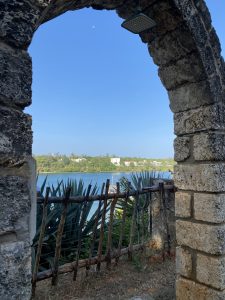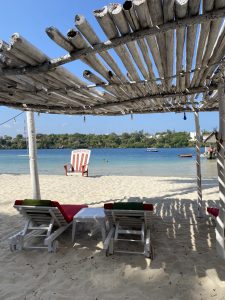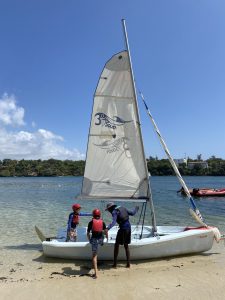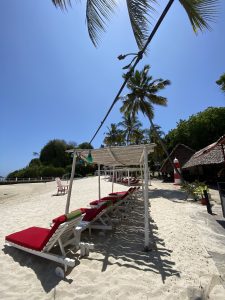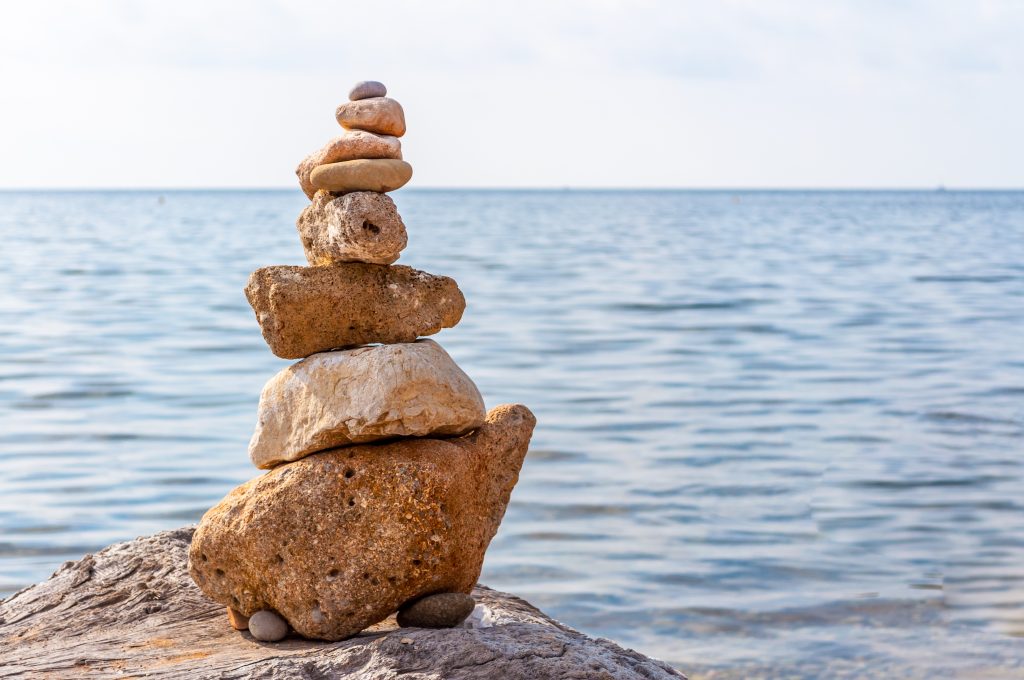In a world that glorifies productivity whilst normalising disconnection from our bodies where we’re unable to hear it screaming for us to slow down, breathe and do one thing at a time until our dis-ease manifests into bodily disease or burnout forcing us to stop; solo of mom of two boys, Lauren Manuel, desired to step off the survival train and cultivate a life of slow living.
Moving to Kenya, the eastern African land of Pole Pole, (meaning ‘slowly slowly’ in KiSwahili) she is undoing habits deemed productive by society and teaching herself and her children a new healing way of life that nurtures the nervous system and also leaves space for connection with each other, herself and nature. Here are some of her tips to return to basics and relearning to live As Slowly As Possible (ASAP);
What do I need?
As mothers we are encouraged to fill out cups first, but how can we water ourselves first if we’ve never been asked or asked ourselves what we truly need in this moment, this day, this week and this life. If I asked you, what nurtures you? What energizes you and what drains you? Would you be able to answer and how readily could you add or subtract these elements from your life- Places, people and situations?
Placing society’s ‘one-size fits all’ model on ‘pampering’ and ‘me-time’ may prove useless or even frustrating when a once-off pedicure doesn’t cut it or replenish you. Because we’ve placed ourselves last on our own do-to-list, we don’t even know what we truly desire anymore, nor do we give ourselves permission to be still, to feel pleasure or joy or even know what that means for us anymore. After neglecting ourselves and our own joy for so long, how do we return to ourselves? It may be time to revisit some of your first loves you may have discovered in childhood. Perhaps try a dance class again, go horse riding, sing some of your favourite songs out loud and if you once did art, try a paint and sip class. And take note of the activities where you forget time, you find yourself smiling without reason, you exhale and feel renewed after.
The art of Monotasking
In an age where multitasking has become a way of life, glorified even and affirmed as strength; it is often the reason we feel overwhelmed, are unable to focus and be present in the moment and less productive. When was the last time you stood still, merely gazing at something in stillness while waiting for the kettle to boil? Similar to switching between the multiple tabs open on your computer screen; according to The American Psychological Association, jumping between tasks or doing more than one task at a time before they are completed is said to reduce productivity by 40%. Motherhood often demands the ability to do multiple things at once, leaving us unable to listen fully to a conversation of our child, while cooking, checking messages on our phone and packing lunches for the next day at school. A few things to assist you to stay focused on one task at a time includes turning off notifications on your computer and phone, time-block with built in breaks. Set a timer to remind you to take a break after you have solidly focused on one task. The Pomodoro Technique is a well-known one that encourages sessions of 25 minutes followed by a five-minute break, with a 15-minute break at least once every two hours. And when you’re somewhere ie. in conversation with your child. Just be here.
Movement Medicine
In busy times, the one thing we need most is the thing we often give up first; movement. We deem ourselves too busy to go to the gym, walk during our lunch breaks and shift into a sedentary state for more hours per day. When really, it’s movement which can save us and give us reprieve. According to Healthline.com, “Somatics uses the mind-body connection to help you survey your internal self and listen to signals from your body on pain, discomfort, or imbalance.
Somatic exercises involve performing movement for the sake of movement. Exercises such as dance, pilates and yoga can be considered somatic. Somatic psychotherapy is a mental health treatment approach that addresses the physical effects of trauma, anxiety, and other issues, including: muscle tension, digestive problems, trouble sleeping, chronic pain and respiratory problems.”
Sign up for a yoga class, meditation session or workshop of your choice at Kanga Studio, Peponi Road, Nairobi and slow down while moving your body. www.kangastudio.co/nairobi/
Nature Immersion
Forest Therapy
There’s never been a day I’ve been able to stay angry, sad or anxious while walking in the forest or merely sitting beside a river listening to the sounds of frogs, birds and insects, taking it the scent of the trees, squashed leaves and pine cones and even better, with my shoes off, feet planted firmly on the earth. And so for the better part of three years, I wrote myself a ‘forest therapy’ script which I filled each day after the morning school run. According to a health.clevelandclinic.org article on forest bathing that’s no surprise.
“Walking through forests isn’t a new practice, but the concept of shinrin-yoku is. It’s only been around since 1982. It’s based on three different traditional concepts: yūgen, komorebi and wabi sabi. “The intent of forest bathing is to put people in touch with present-moment experience in a very deep way,” explains clinical psychologist Susan Albers, PsyD. “The sights, sounds and smells of the forest take us right into that moment, so our brains stop anticipating, recalling, ruminating and worrying. “Forest therapy engages multiple senses,” she notes. “That sensory immersion directs attention away from negative thoughts and promotes a more positive mental state.”
Get back to basics and together with the children, rewild and unwind beneath the giant trees and magical gardens of Zereniti House Boutique Hotel in Red Hill, Limuru . Enjoy breakfast beside a brook while the kids make forts out of bamboo, pick vegetables from the garden to hand over to the chef to add to dinner and start the day mindfully on your yoga mat in the sensory garden. Walk, play or relax on a picnic blanket in the midst of their magnificent trees www.zerenitihouse.com/
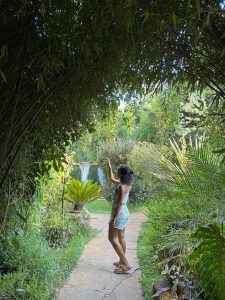
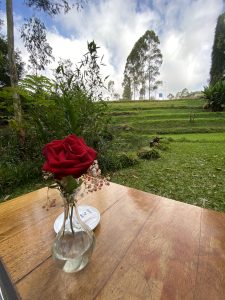
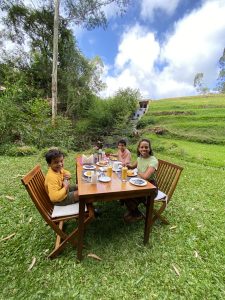
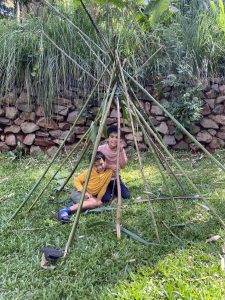
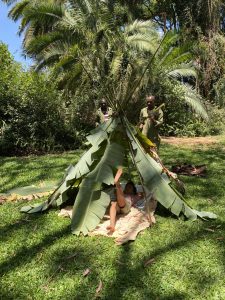
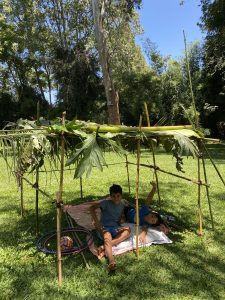
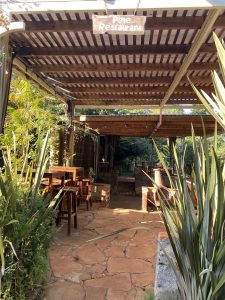
Ocean Immersion
Throughout the ages, many cultures have revered water as a sacred element to have healing properties. Being near or in water has the ability to reduce feelings of stress, regulate our body temperature and shift our mental well-being. As an avid ocean lover; my body and my mind rejoice in time in the ocean whether that is surfing, snorkeling, or swimming. According to WHO Green and Blues Spaces and Mental Health- New Evidence and Perspectives for Action, “mental health is a state of well-being in which a person realizes their abilities, can cope with the normal stresses of life, work productively and is able to contribute to their community (WHO, 2004). The multiple benefits to health and well-being, including to mental health, of the natural environment in cities through contact with green and blue spaces are increasingly recognized.
At Silver Palm Spa and Resort, Kilifi, you are never separated from the sight and sound of the ocean. Immerse yourself in the salty ocean or spend hot days in their winding pool. Kids will love running straight into the walk-in pool leading outward from the lounge. Balmy evening, buffet dinners and a midday massage at the spa.
www.silverpalmkilifi.co.ke/

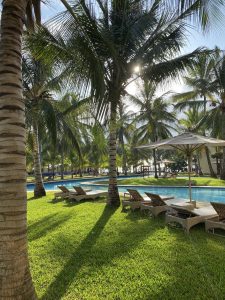
Nervous System Reset
If anyone understands what it means to function with a constantly fluctuating nervous system, it’s a mother. Try convincing your nervous system that you’re not fleeing from a lion in the wild, but attempting to raise a fearless first-born son and a curious toddler. Often what feels familiar to your nervous system isn’t necessarily what’s healthy, it’s just the known. So when trying to cultivate new normals and habits, it may feel uncomfortable even unsafe as your nervous system only knows urgency as a trauma response or rushing.
According to Tracy Freeman Valentine, LPC-MHSP, a Clinical Supervisor at Charlie Health, “Stimulating the vagus nerve (the longest cranial nerve you have, which plays a big role in regulating your parasympathetic nervous system) helps to reset after a stress response and restore the body to a steady state.” A few things you can do at any time to calm your parasympathetic nervous system and help move you out of flight, flight, or freeze into rest and digest includes deep and slow breathing which according to Freeman Valentine, activates the vagus nerves and leads to a reduction in anxiety and stress responses. “Making sounds of vibrations such as humming, singing, or gargling have been shown to stimulate the vagus nerve and activate muscles resulting in an increase in heart rate variability and vagal tone. Icy plunges (ocean, shower or even face in a bowl of ice water) and massaging the head and neck area can stimulate vagal sensory neurons and activate the parasympathetic nervous system’s rest and digest mode.
Slow down on Kenya’s coast with salty skin and sandy feet at Mnarani Beach Club Hotel in Kilifi. On one of catamaran joy rides or a sailing taster lesson for all ages, there’s nowhere you can be but present. After a sunset ocean dip and a grilled fish dinner, hop on a dhow cruise to catch the moonrise. If they ever leave the pool, children can enjoy archery, table tennis while parents exhale. www.mnaranibeachclub.com/
